Day 1 - Fukuoka To Atago To Meinohama, Kyushu 108 Temple Pilgrimage, Japan





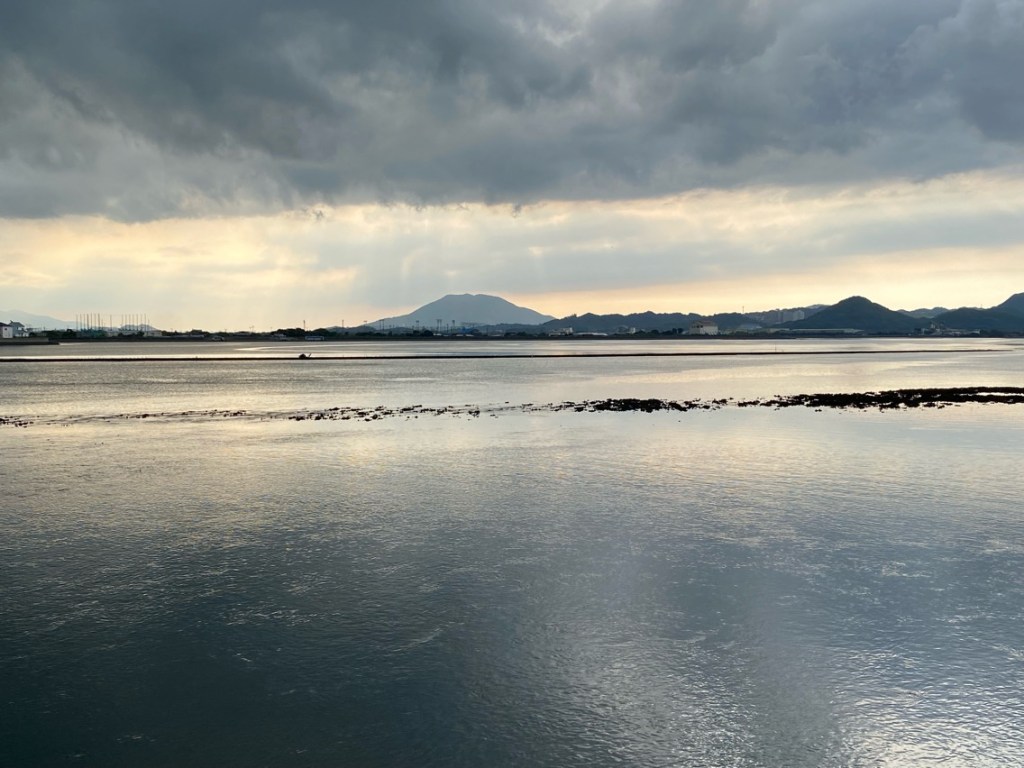













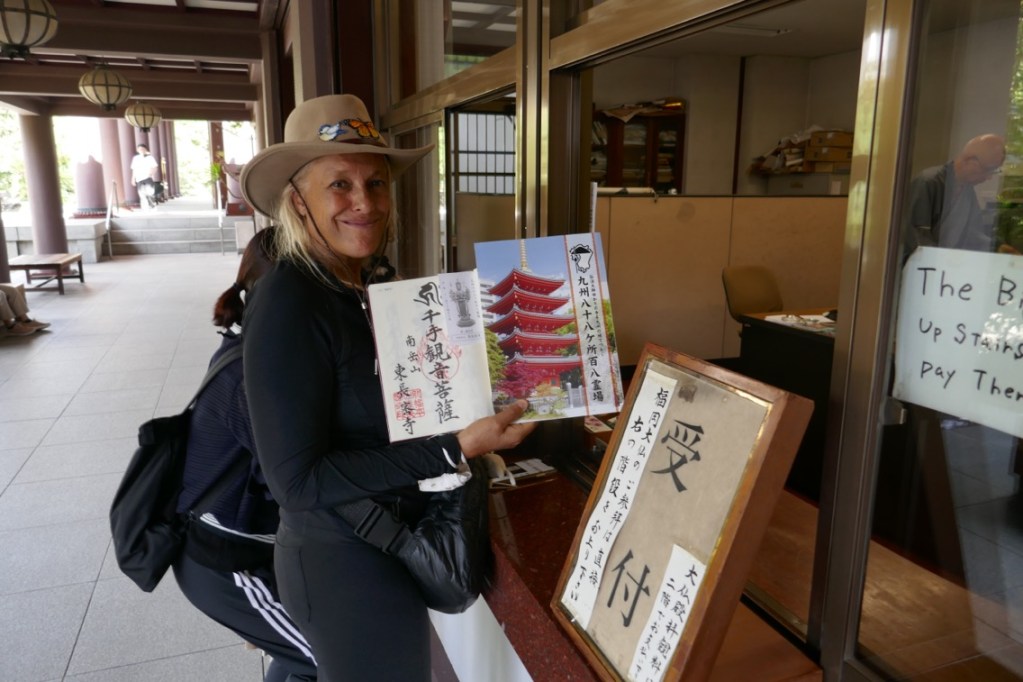

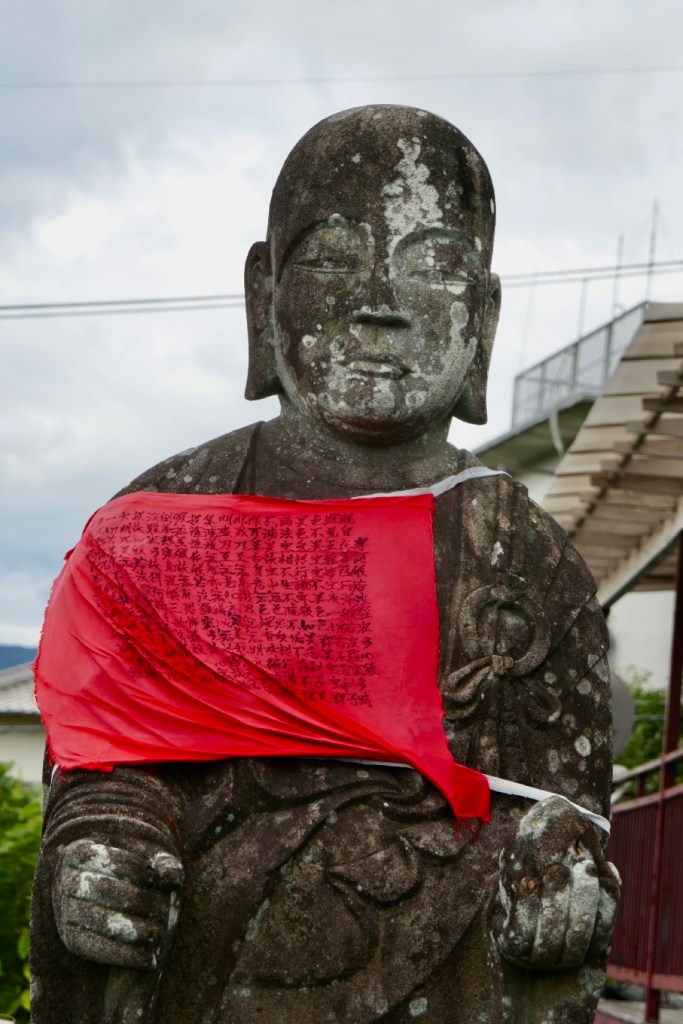




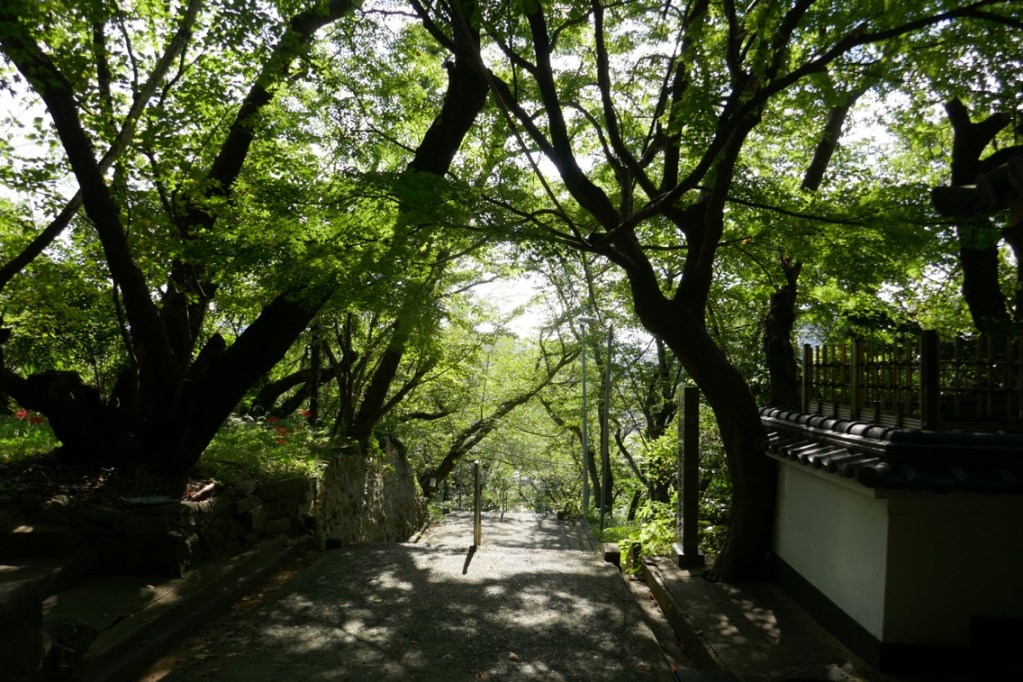








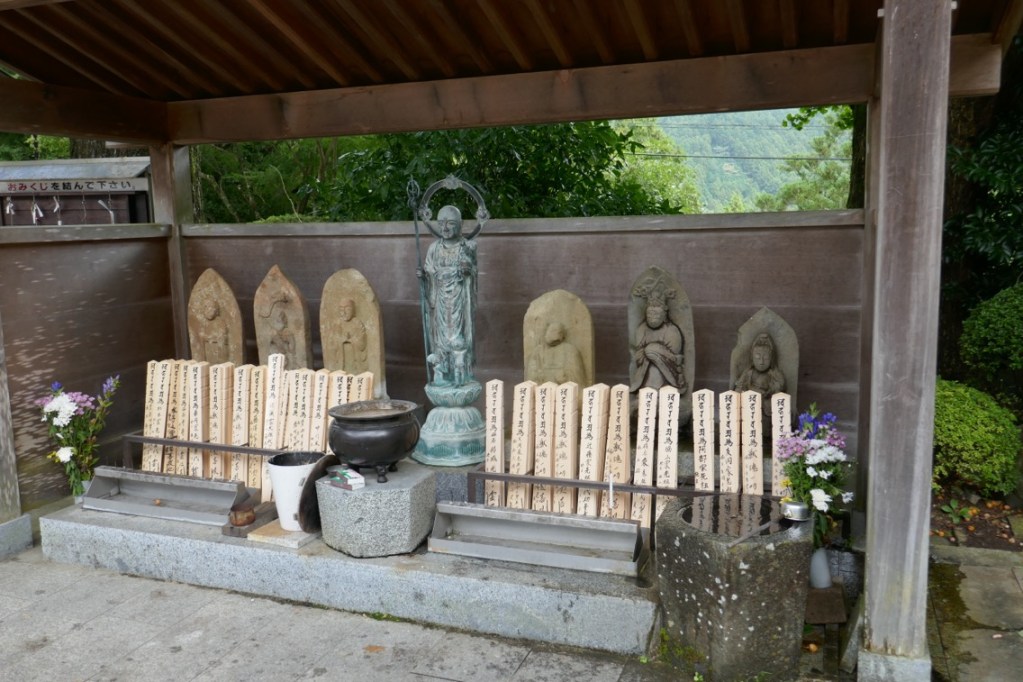

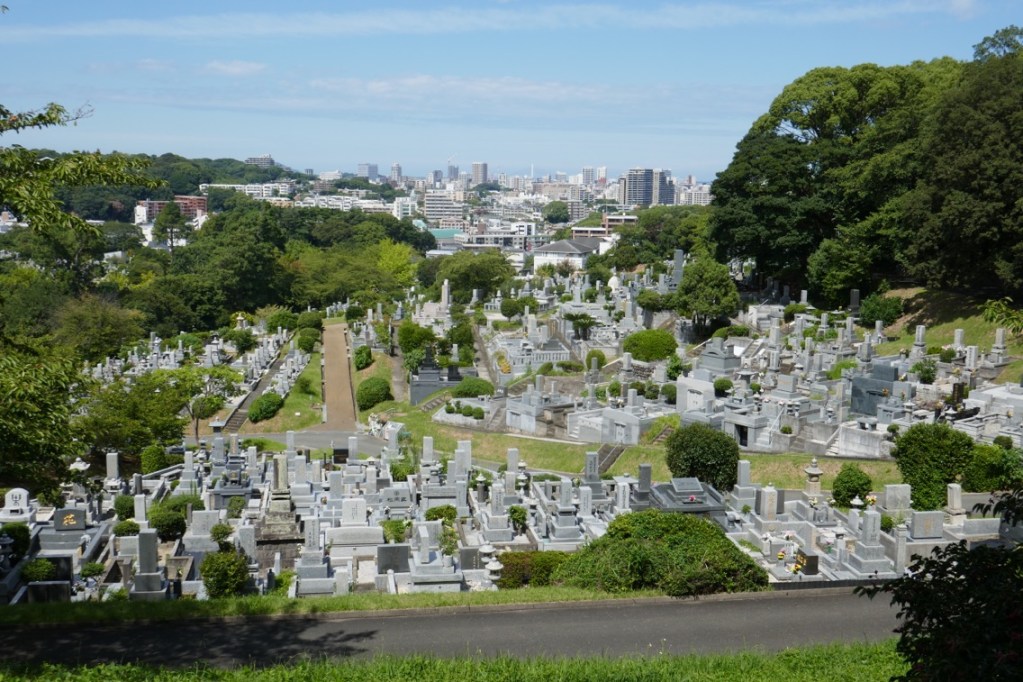


Day 1 - Kyushu 108 Temple Pilgrimage, Japan
We landed in Fukuoka early in the morning.
It was too early to check into our hotel, so we stored our backpacks in a coin locker at Hakata station in the center of Fukuoka.
Our first temple is located only a kilometre away from the station, but like all Buddhist temples it is open from 9am to 5pm and so was also not yet open, so we decided to sit in a cafe and have some tea and a breakfast.
Starbucks had no hot tea of any kind, no brewed tea including green tea, not even an Earl Grey tea.
They had only pre-sweetened matcha latte that has way too many calories and is way too sweet for my taste.
We had no luck at the next chain cafe, nor at the local cafe after that.
All serve coffee almost exclusively.
My heart sank.
About 23 years ago, when we first started coming to Japan, it was completely the opposite.
Green tea was in great abundance with many varieties, and it was hard to find any coffee anywhere.
We were doing a cycling trip in central Japan and the Shikoku area, guided by Mason and Willard.
Mason wrote one of the first Lonely Planet guidebooks to Japan and Willard was a cycling guide and an entrepreneur who mostly guided cycling trips in Vietnam.
It was a memorable and life changing journey, cycling in Japan at that time.
Most Ryokans (traditional Japanese inns) did not admit foreigners, so you needed an introduction or a reference in order to book a room in most Ryokans.
Upon checking in, we were served local green tea and regional sweets, accompanied by a short musical concert on the Koto, the traditional Japanese string instrument.
Upon checking out, we were always presented with a parting gift of a ceramic bowl, or tea cups or a box of sweets or hand towels engraved with the Ryokan’s logo.
We learned a lot from traveling with Mason and Willard.
I loved drinking green tea all the time, but Jules, Willard and Mason really craved their coffee and were always disappointed when told that coffee wasn’t available or were presented with black coffee that was too strong to drink.
23 years later, all Japanese people, including old ladies, drink coffee, and green tea has been phased out.
Nowadays, when checking into traditional inns in Japan, you mostly get a list of what you shouldn’t do, accompanied by illustrations to make sure that foreigners will understand all the rules and regulations
Everything went according to the plan today, although it was far from easy.
In fact, I didn’t expect it to be so hard and I felt so disheartened.
The walk to Tochoji, Temple number #1, felt nostalgic.
A few years back we lived in Fukuoka for two months while attending Japanese language school.
Our first apartment was located right behind Tochoji Temple.
Every day on our way to school, I saw buses of tourists coming to see the big Buddha.
At the temple, we bought a scroll and a stamp book.
Unlike the Shikoku pilgrimage, where temple #1 sold an array of pilgrim’s accessories like white jackets, bells, conical hats, walking sticks, white bags, incense, etc, this temple had a disorganised and somewhat dusty office with one busy monk.
But when I asked him for the Kyushu 108 temple book and scroll, he looked very surprised but knew exactly what I was asking for and pulled them out of a cabinet.
All the calligraphy was already printed on the book and scroll.
Only the red seals will be added at each temple.
We visited the big Buddha and prayed for strength on this journey.
Tochoji temple was founded in the year 806 by Kukai (Kobo Daishi) upon his return from Tang (modern-day China).
At that time, Daishi was 33 years old, and this temple is the oldest sacred place in Japan of the Shingon sect.
Known as "The Great Buddha of Fukuoka," this carved wooden Buddha was installed here in 1992.
It is the largest Cypress wood sitting Buddha statue in Japan.
Under the seated Buddha, there is a dark tunnel with images of hell that lead to a completely black tunnel.
A couple went in and turned back and told me that there was nothing there.
But I knew better, because I have walked through that dark tunnel before.
This passageway is symbolic of our journey to enlightenment here on earth.
You start at a point of complete ignorance of the way things are, suffering from all sorts of diseases and problems and pains, not knowing how you imagined them into reality or which way is up.
This is hell on earth.
Then you go through a dark tunnel of disbelief and then emerge into the light, under the guidance of the Buddha or of your other chosen spiritual guide and helper.
The couple walked behind us admiring the paintings of hell, but when we entered the darkness of the tunnel, they turned back.
It is amazing how people will not even endure five minutes of complete sensory deprivation.
I simply put my hand on the carpeted wall and walking slowly along the curved tunnel with Jules following me.
The principal object of worship in the main hall (called Honzon,) is a statue of a standing thousand-armed Kannon.
The temple grounds also house a Five-storied pagoda painted red, with calligraphy by prominent people of the day engraved on the inner doors.
The temple grounds also has the Chikuzen feudal lord Kuroda family graves.
They were the ancient feudal lords of Fukuoka.
Temple #2, Shingon Shudaikakuji, was up a hilly area with no cafes along the way, but we bought water and green tea from the vending machines along the way.
It was so hot that after about six kilometres, I had leg cramps and my feet were really throbbing.
Jules did well.
I really didn’t expect to be feeling so weak.
I know it has been three years since we last walked a pilgrimage, but what has happened to me?
Just two weeks ago I walked 15 kilometers in Bangkok every day in ninety degrees weather and didn’t feel so much pain…
I really doubted that I would be able to complete today’s walk.
But Jules reminded me to just put one (achy) foot in front of the other (achy) foot and before I knew it, the day would be over.
The monk at temple #2 was super friendly towards us.
He explained about the temple and even performed the Heart Sutra on the Taiko drum for us.
We could not follow along with him because he chanted really fast, but it was quite awesome.
He told us that he and the other priests in his drumming group recently performed the Heart Sutra on Taiko drums in Italy.
The temple is nestled quietly on the hillside a few kilometers southwest of the city center of Fukuoka.
The land was once a grassy hill, but has been transformed into a residential area with the times.
The main hall was erected by generations of priests, and was relocated to the current location.
The priest advised us how to walk to the next Temple, #85 - Atago Yama Kanon Temple, located on mount Atago.
He said to look for the long set of stairs behind the Seven Eleven convenience store.
We followed his advice and after three long hours of walking in the sun, we located the stairs.
We climbed up too high, up to the Atago Shinto shrine.
The priest at the shrine took us down his private elevator and showed us how to walk down to the temple.
The priest at the temple was very nice and showed us the main shrine with its beautiful wood carvings of different deities.
Some are so old that they have been blackened by fires and time.
The last temple for the day was only 15 minutes away and the priest and his son gave us Buddhist bead bracelets as gifts, bottles of ice teas, two cans of ice coffee which we could not refuse even though we don’t drink coffee. They chatted with us about our long journey ahead.
They asked where where we were staying in Fukuoka, and gave me the thumbs up, saying that the Onsen (hot springs) hotel that we chose is really awesome.
I was relieved to hear that because we hadn’t yet checked into the Onsen.
We had a late lunch at a small cafe where the owner made us a delicious salad with avocado and smoked salmon and a delicious tomato pasta.
I also drank Yuzu beer that tasted like a spiked lemonade.
The best was resting my achy feet in her cafe and it gave me the strength to finish the day’s walking.
We claimed the bags out of the coin locker in Hakata station and took a bus to the Onsen hotel.
The monk was right, the Onsen was awesome with many hot spring pools with mineral waters imported from Yufuin Onsen and Takeo Onsen, two of Kyushu’s famous Onsen towns.
The room we were given was really tiny, no more than 8x8 feet.
It is the smallest room we have ever stayed at.
We asked to pay to upgrade to a bigger room, but it would only be for three nights because the hotel is fully booked.
Jules ate a dinner of Soba noodles and I ate a vegetable hotpot with noodles and mushrooms with tofu.
After dinner we had handmade ice cream of raspberries, grapefruit and lichee.
We changed into our summer kimonos and went to bathe in the hot springs.
The Onsen operates as a public hot springs, and people can buy a membership or pay for a day entry.
It is really awesome and offers a serene environment, even when it’s full.
After soaking for almost two hours,
I rubbed my feet with tiger balm and slept really well.
Today’s Stats:
Steps 30,900
Today’s walk: 22 km
Temples visited:
T1 - Tochoji Temple 東長寺
T2 - Shingon Shudaikakuji Hashogetsuan Hannyain 松月庵 般若院
T84 - Choeiji 長栄寺
T85 - Atago Yama Kanon Temple 愛宕山観音寺
The information below is for those who plan to do this pilgrimage and want some information in English about the temples.
About Atago Yama Kanon Temple #85:
This mountain overlooking the sea was originally called Mt. Washio.
A temple called "Torin-ji Temple" belonging to the Tendai Buddhist sect, was founded here in the year 899.
Above it, the Washio Shrine was founded in 12 AD at the top of the mountain.
In 1634, Tadayuki Kuroda, the second lord of Fukuoka, prayed to the god Atago-Gongen who is depicted mounted on a white horse and carrying a ringed staff and a desire-cancelling jewel.
The lord feared that a rebellion was about to happen.
After his suspicion was cleared, he founded Atago Shrine on the top of the mountain and this temple of the Shingon sect.
In 1907 the Ordinance for the Separation of Shinto and Buddhism closed both temples on the mountain, but the Kannon-do Hall was left here.
People who experienced hardships came to pray here and were granted miracles.
When the restrictions were lifted, the temple was opened again.
About Choeiji Temple #84:
Located in an area called Meinohama, which is becoming a suburb of Fukuoka.
High-rise apartments line the center of Fukuoka City, and when you enter the old road where this temple is located, the old-fashioned townscape is a charming remainder of a different aesthetic.
This temple was built by Kaizan Zuikoni in the early Showa period, who was the founder of eighty sacred places in the land of Kyushu as places of healing and heart.